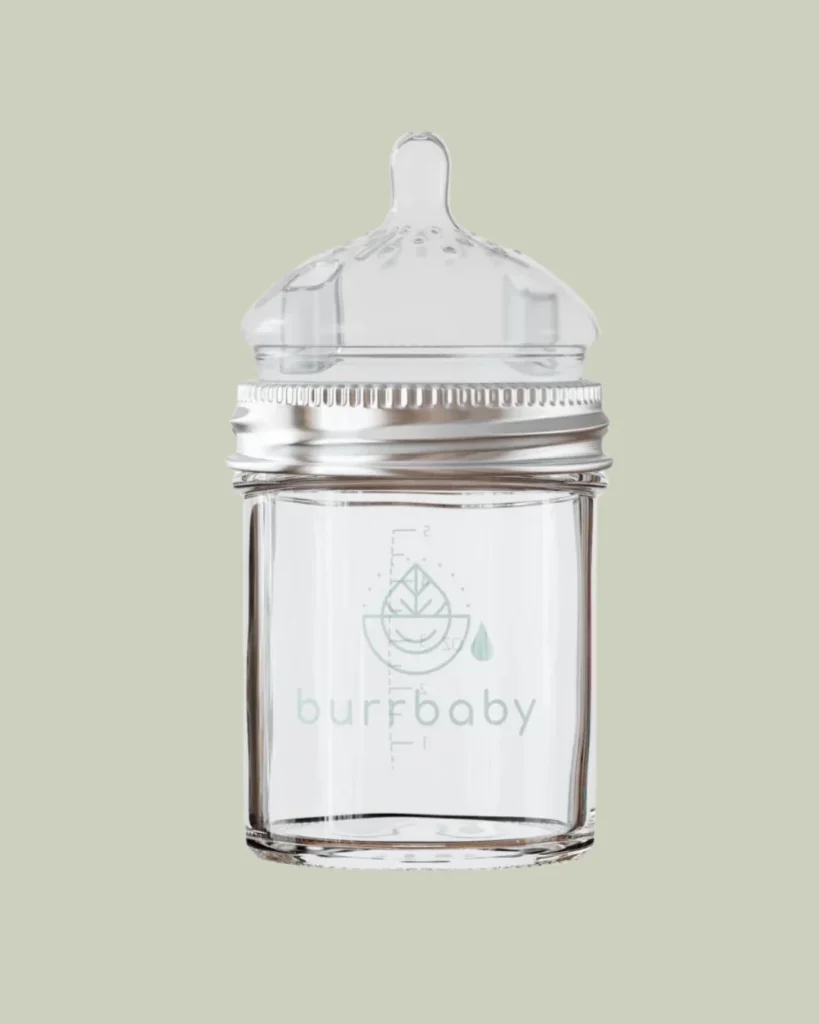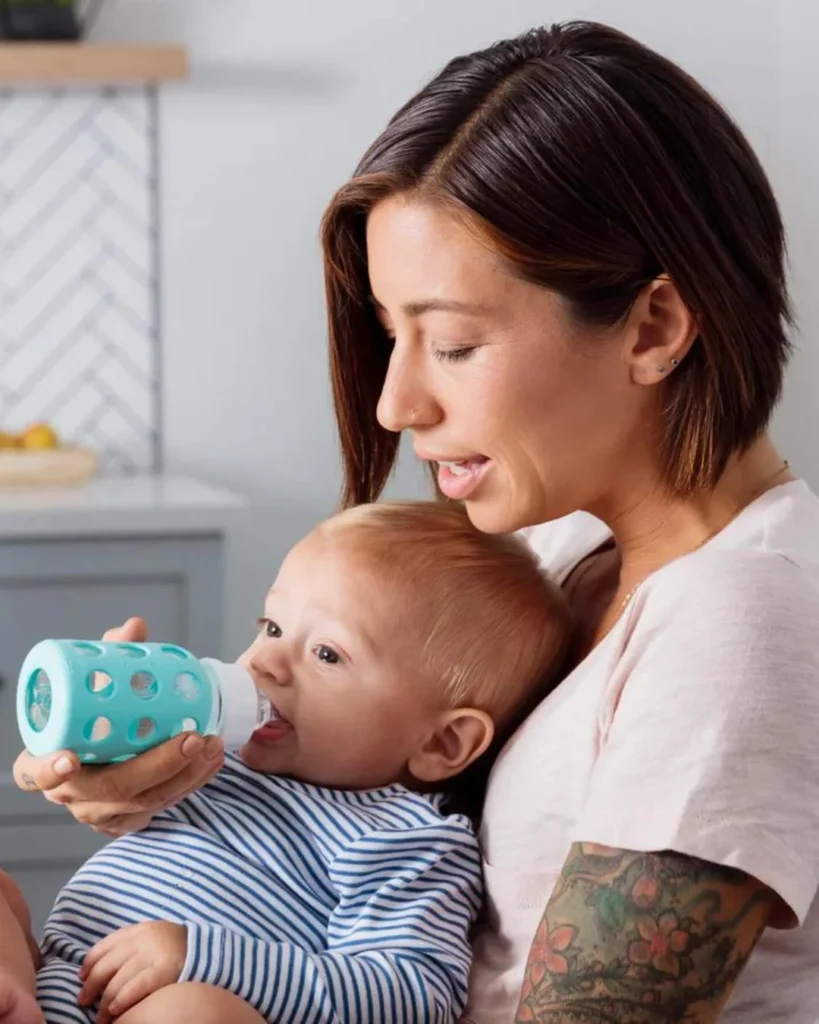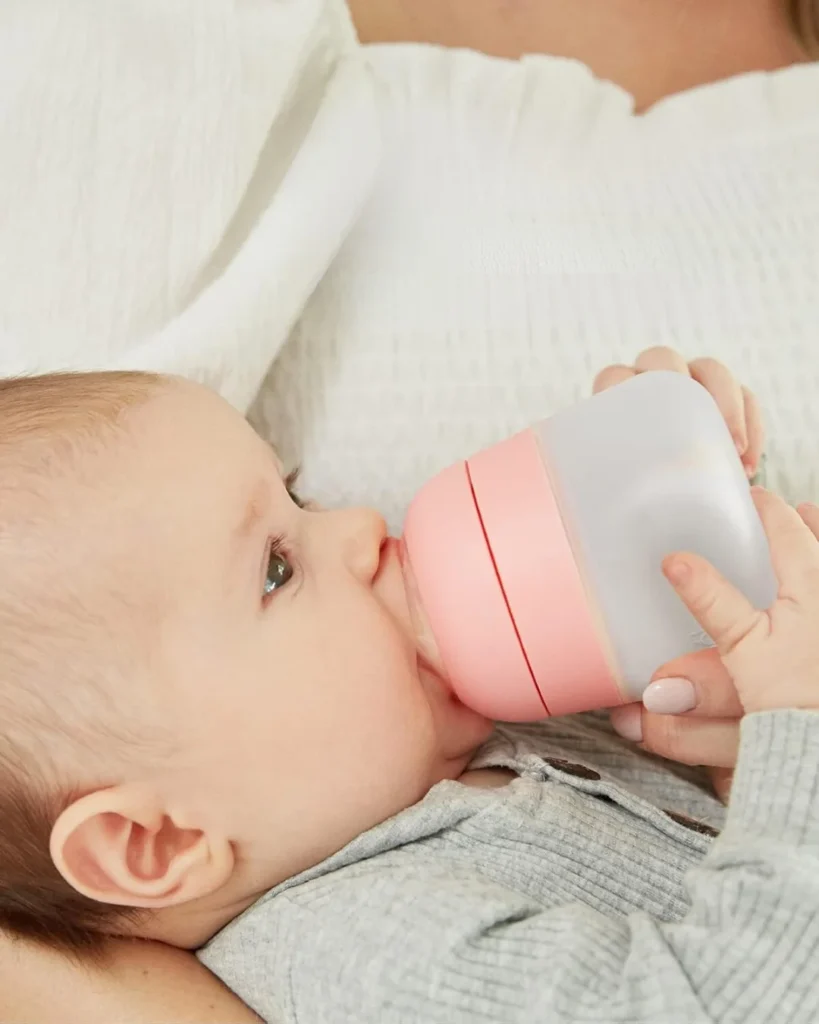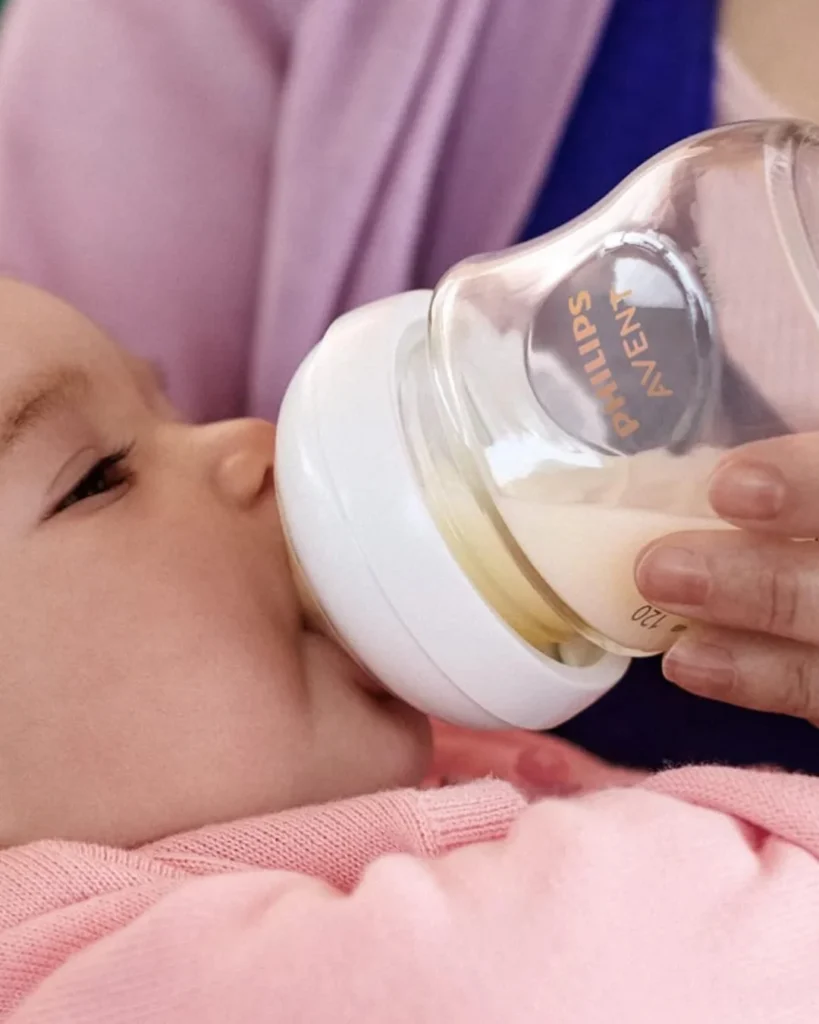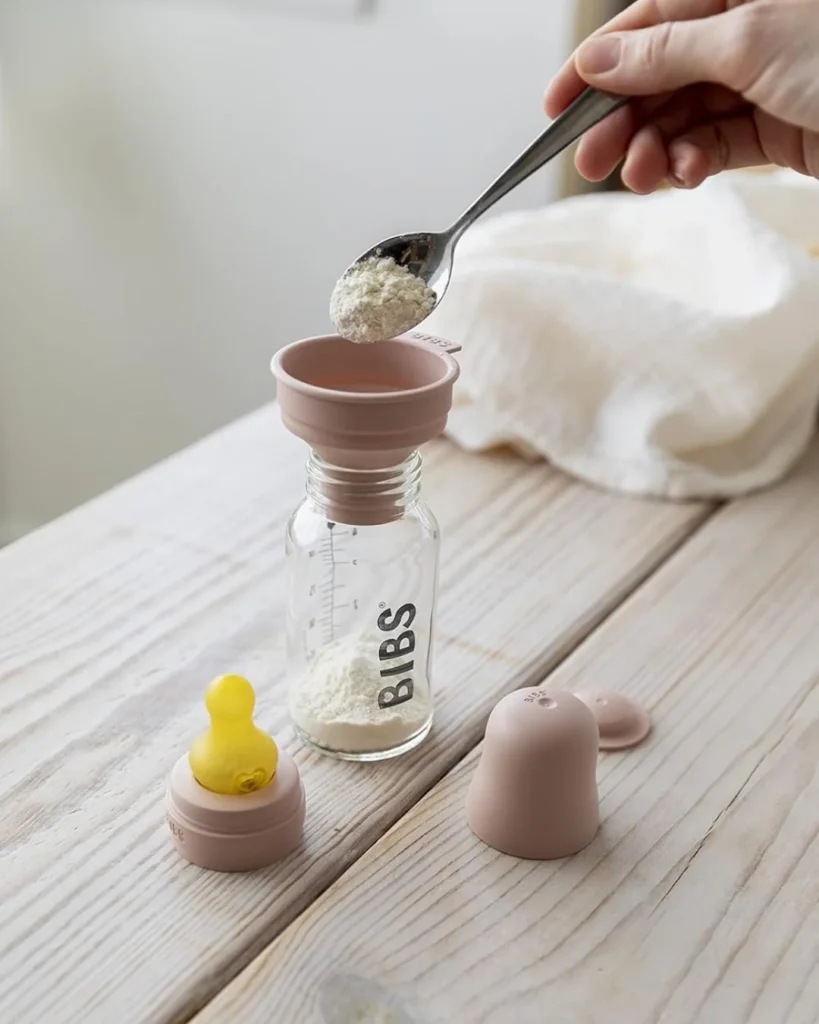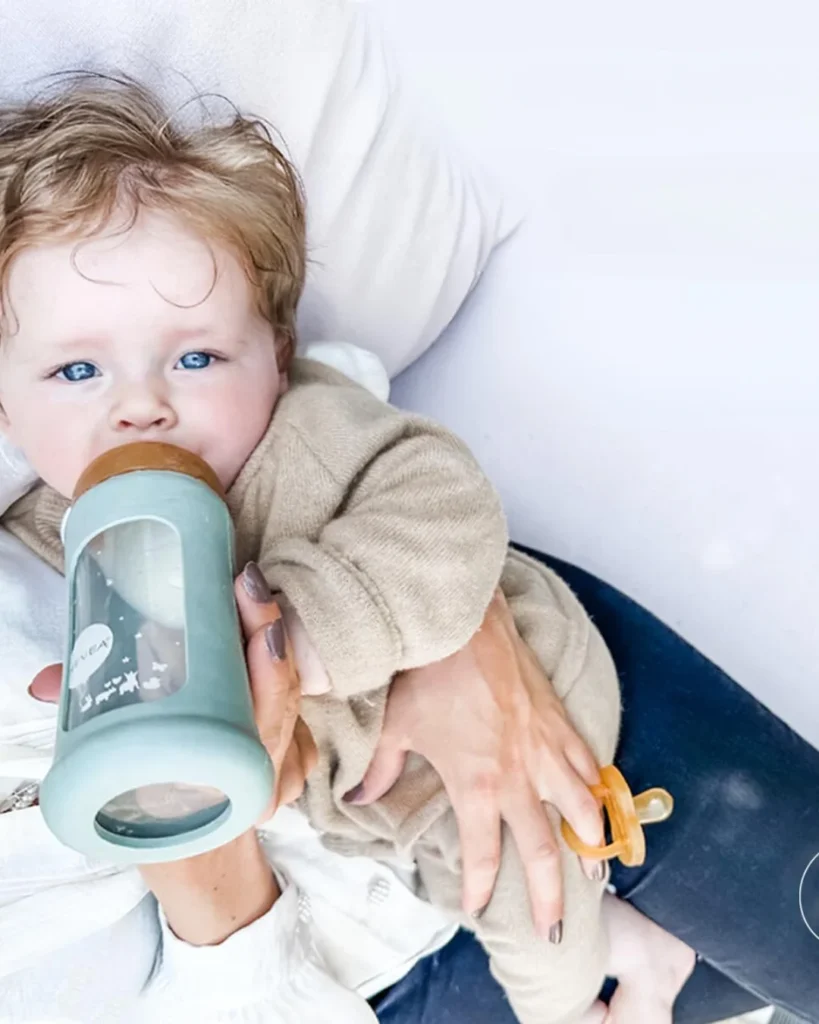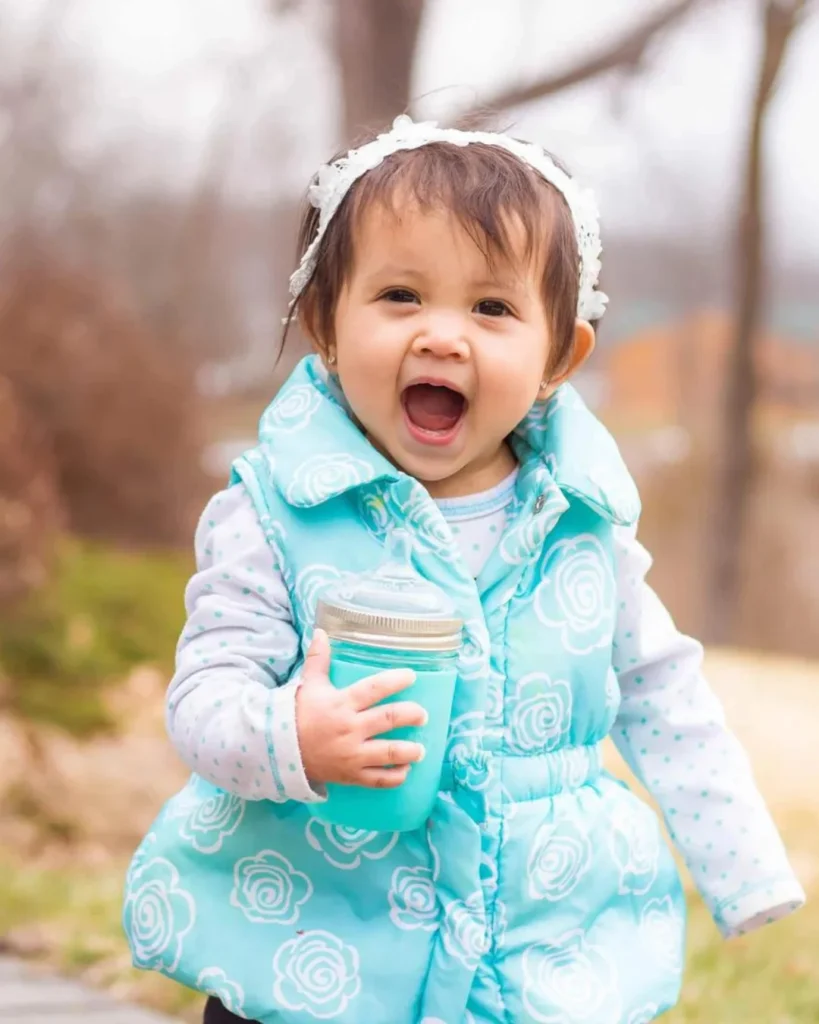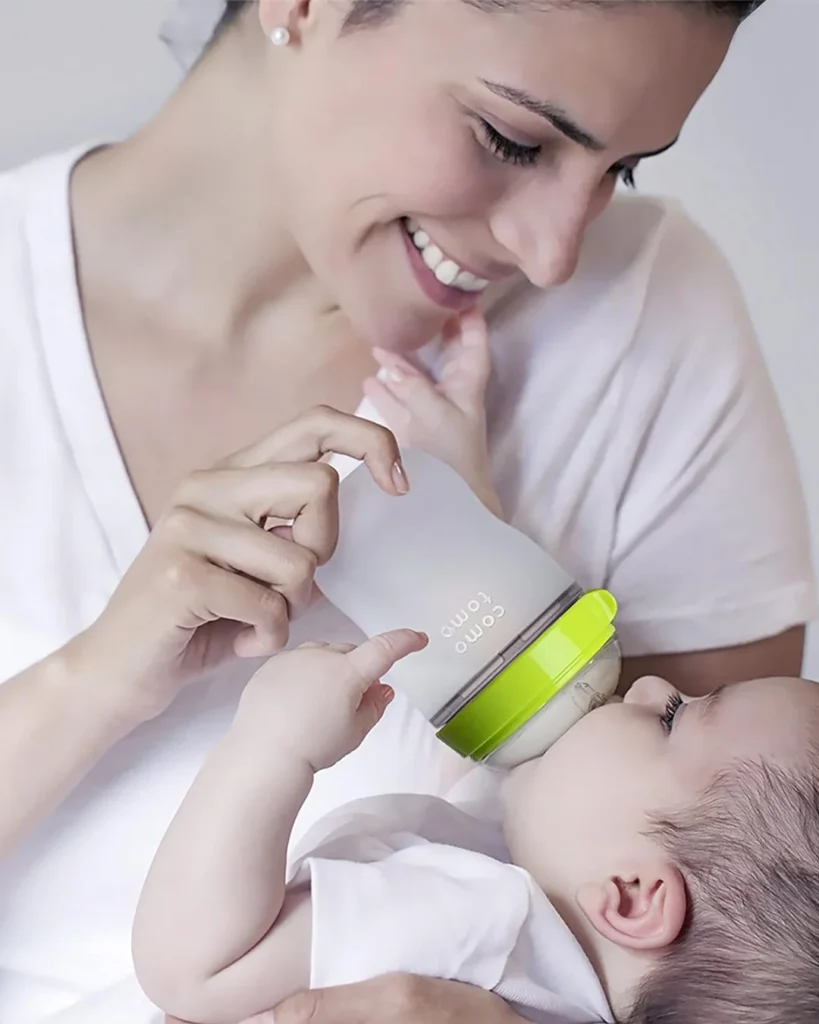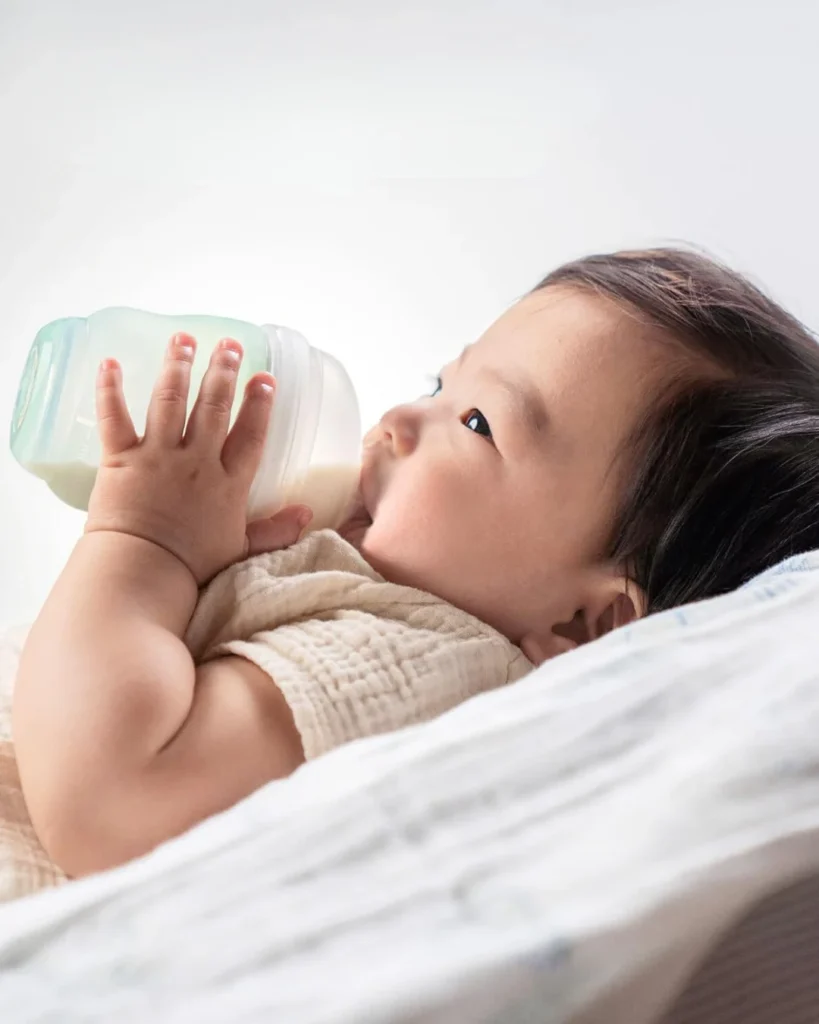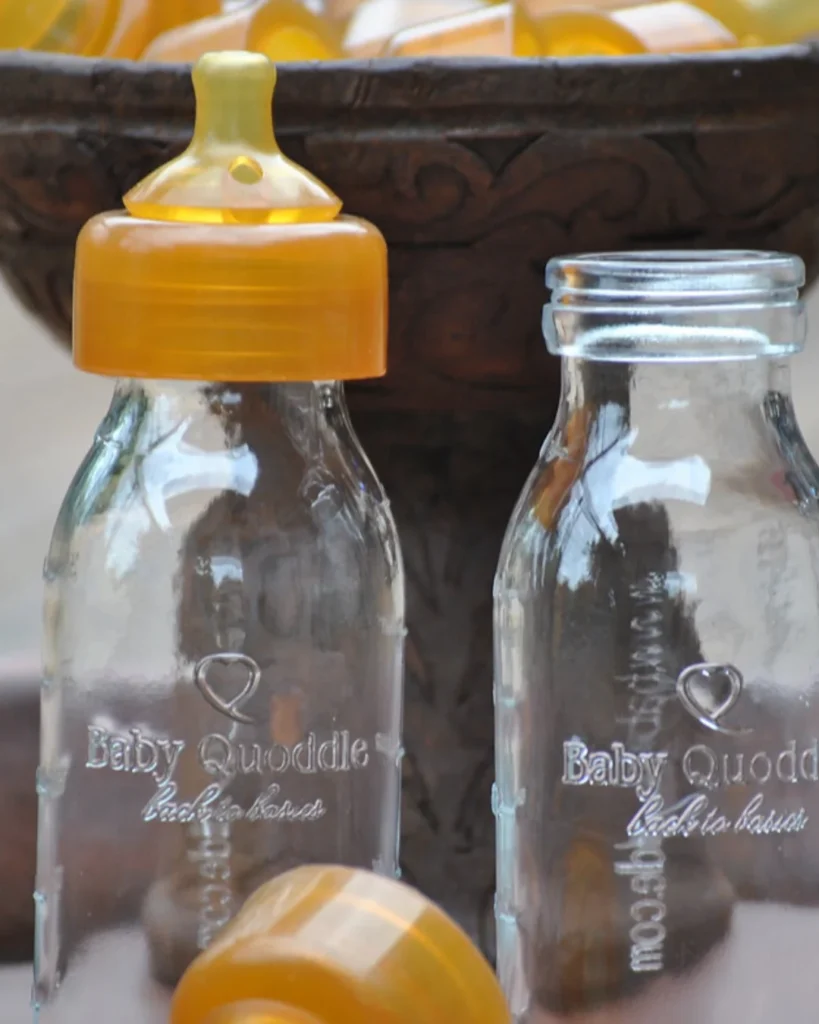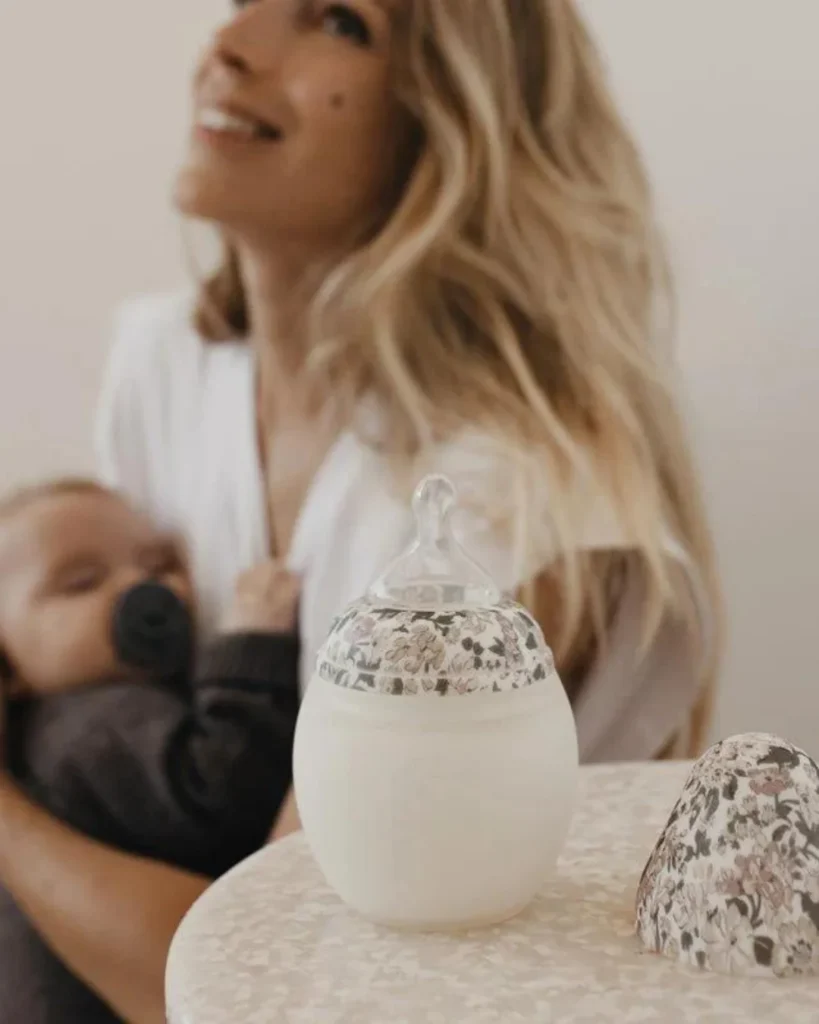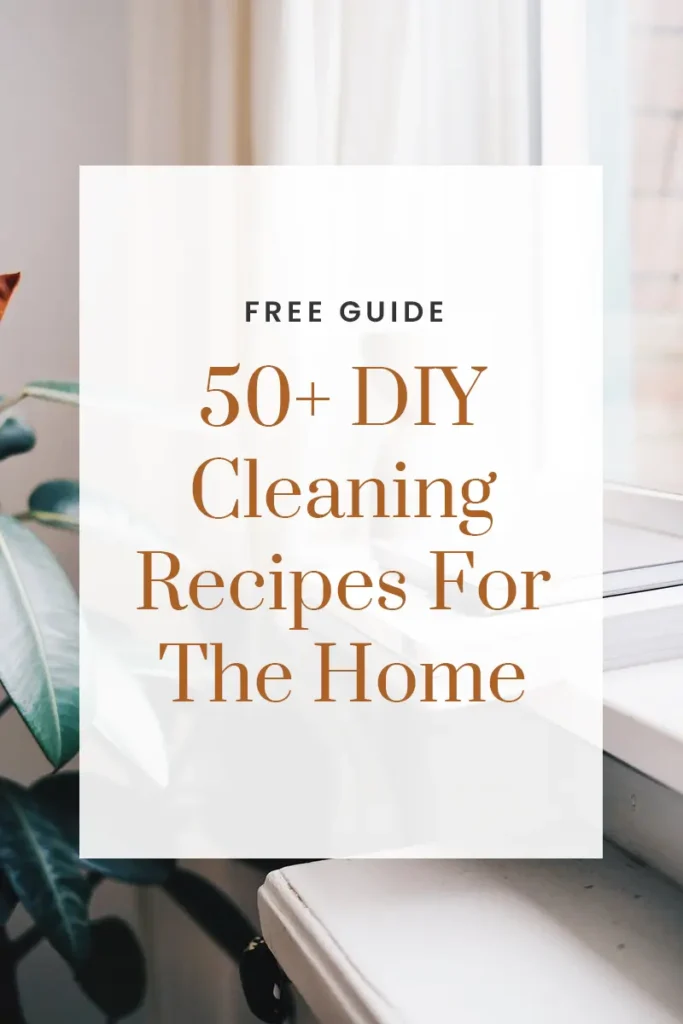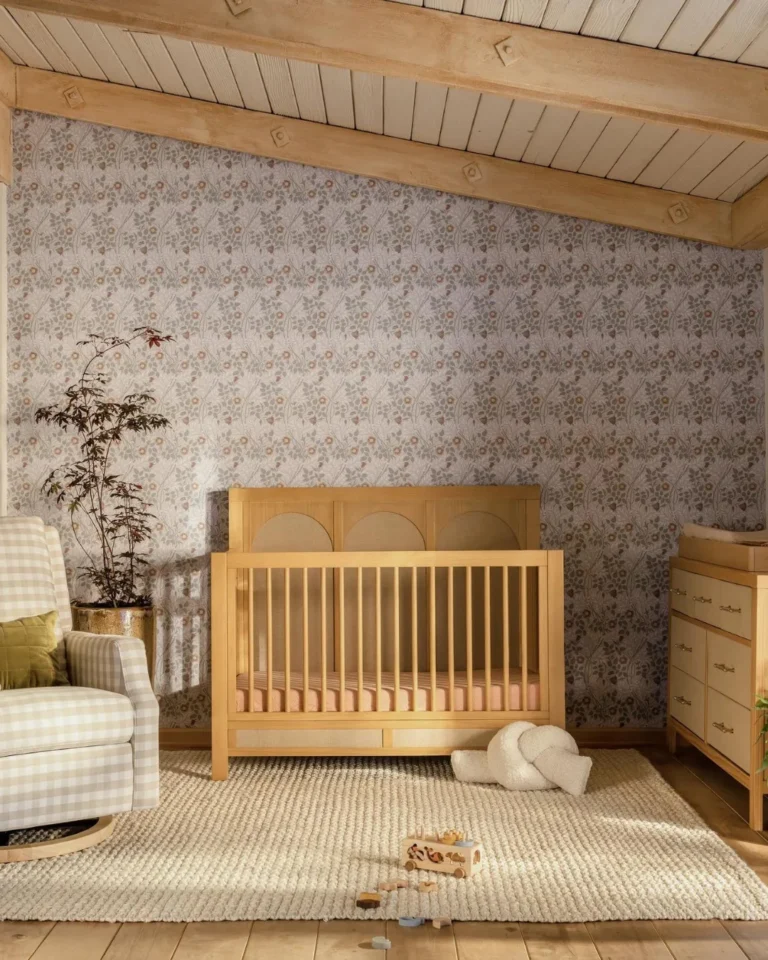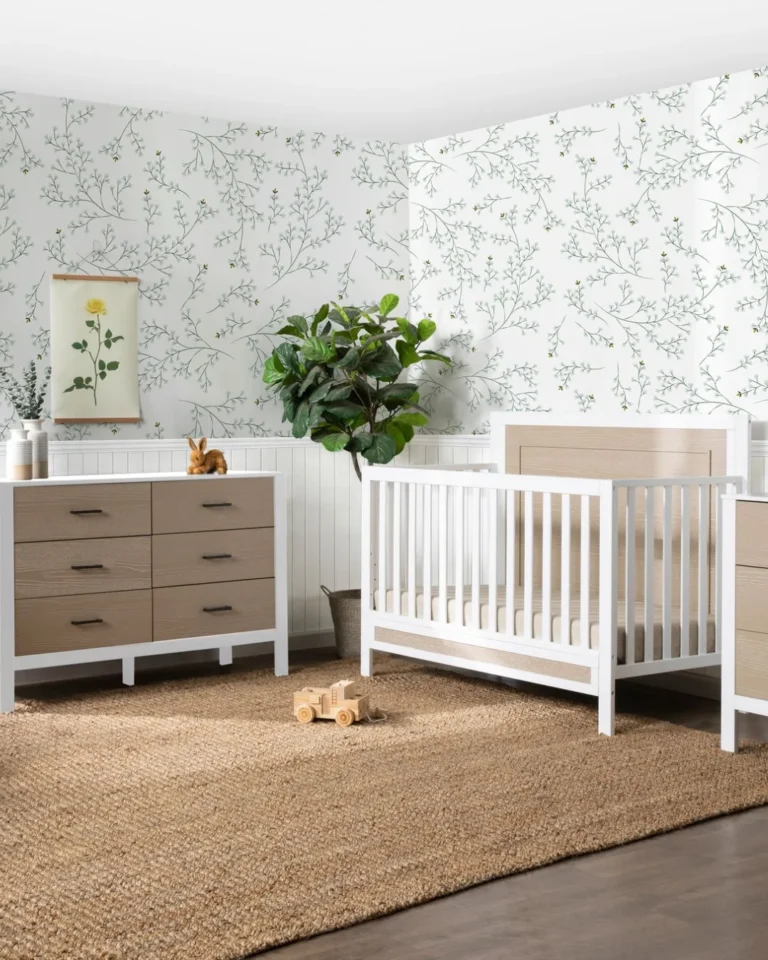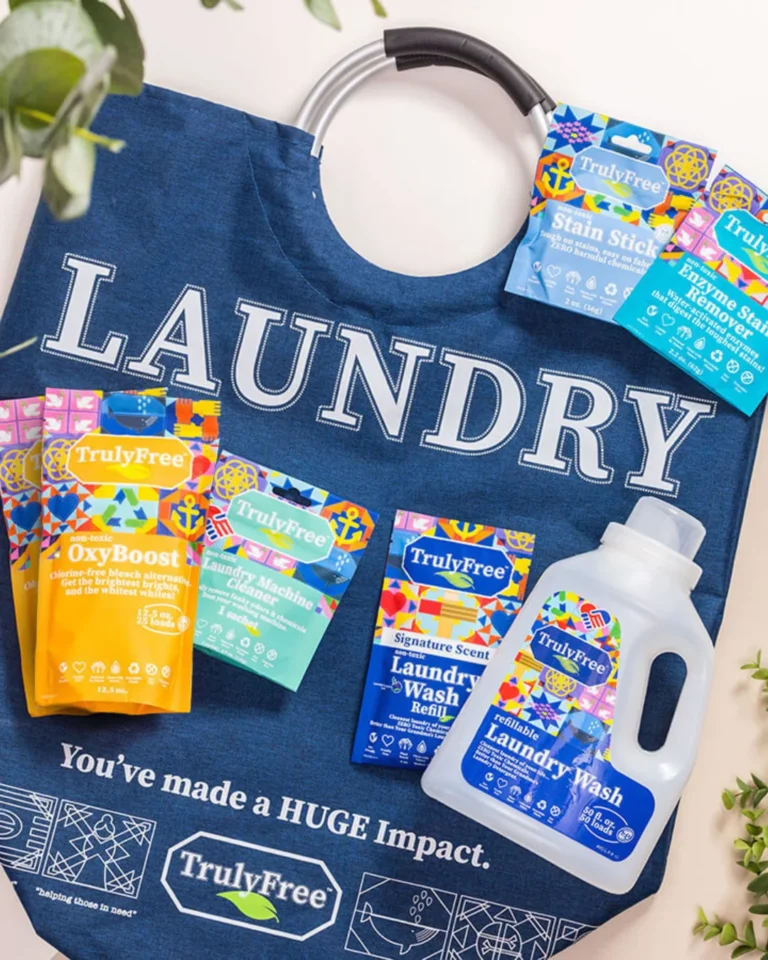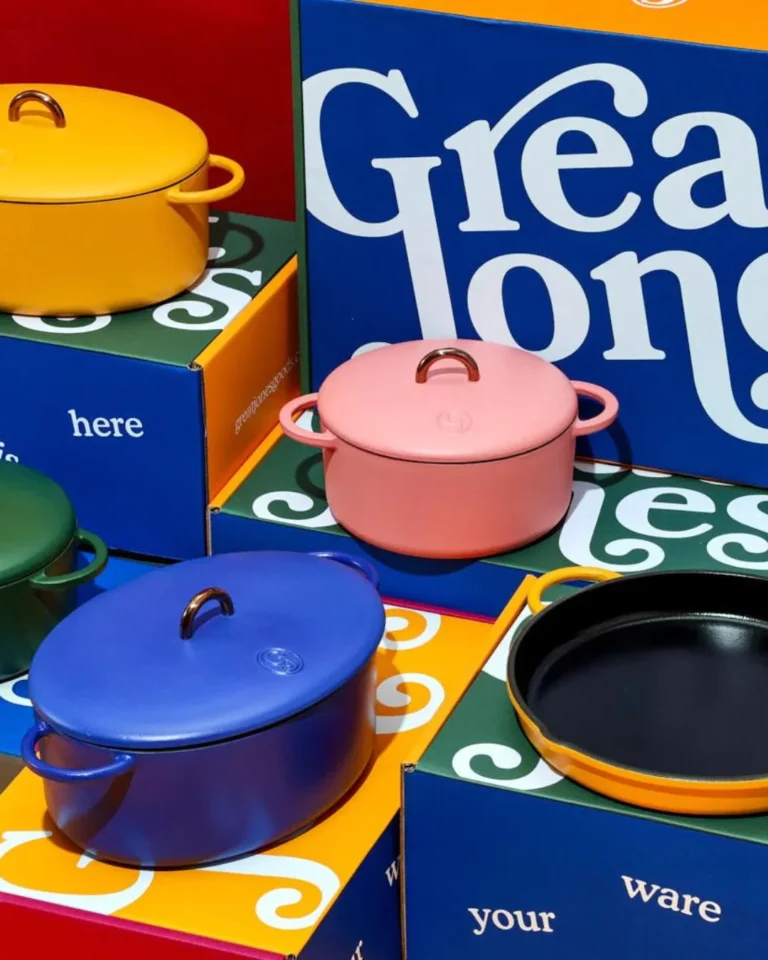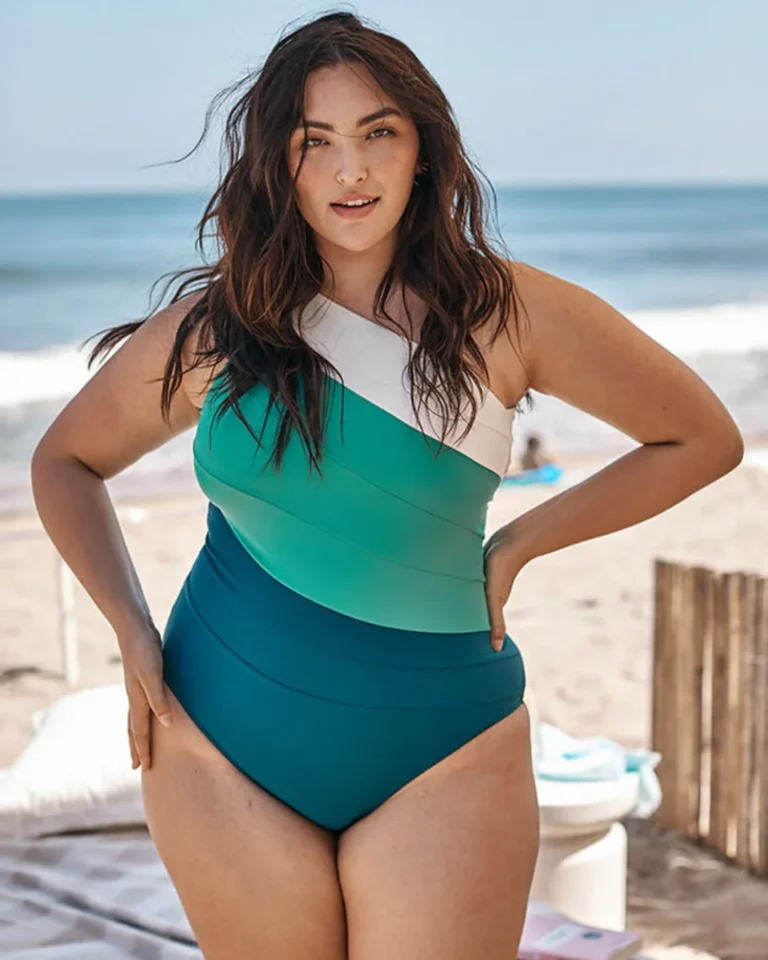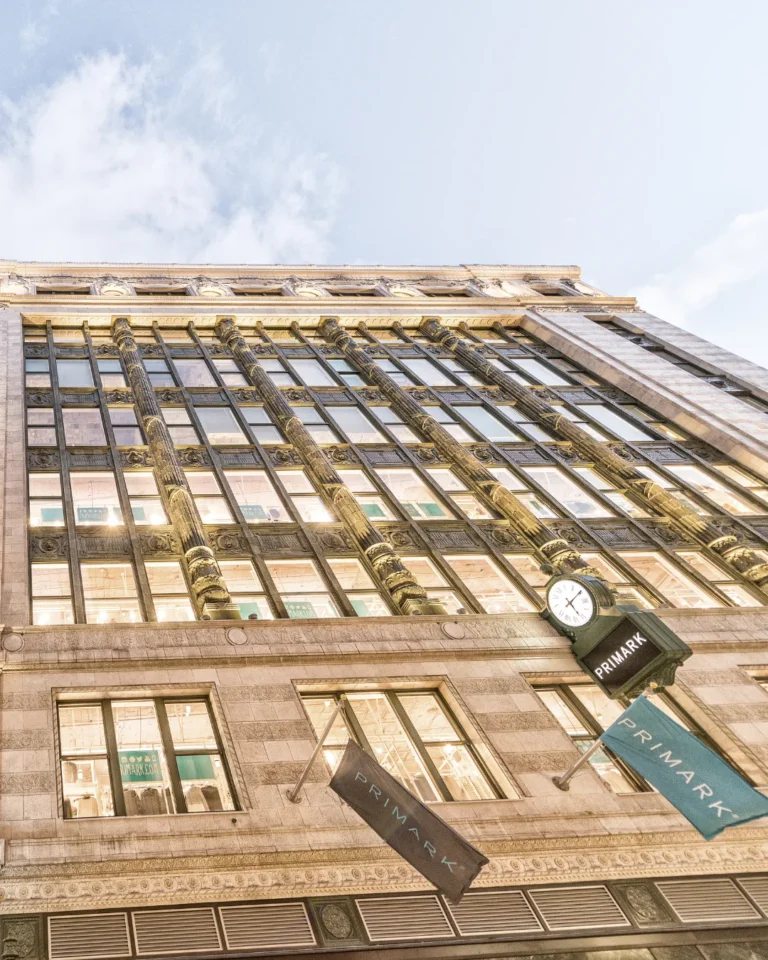SKL is reader supported. When you buy through links on our site, we may earn affiliate commission. Learn more here.
Are you looking for the safest non-toxic baby bottles for your little bundle of joy? You’re in the right place – we’ve got a lot of great options for you!
Choosing a non-toxic, chemical-free baby bottle is one of the best ways to protect your baby’s health and enjoy worry-free feeding time.
The SKL team has brought you the best natural baby bath products, non-toxic baby wet wipes, and even the safest sunscreen for babies! Today, we’ve rounded up the 11 best non-toxic baby bottles for 2024.
Our favorite non-toxic baby bottles…
- SKL Top Choice: Burr Baby Glass Bottle
- Best glass bottle with silicone sleeve: Life Factory
- The best silicone baby bottle: Nanobebe
- Best glass bottles for breast & bottle feeding (combined): Phillips
- Best glass bottle with anti-colic nipple BIBS
Nothing is more precious than those quiet moments snuggling with your baby during feeding time. Even the late-night feedings, fussy moments, and occasional upset tummies become the tender, bonding moments that you will cherish forever.
We often grab the nearest bottle without thinking about what it’s made of. But the truth is, choosing safe materials for your baby’s bottle is crucial for their health and safety. It’s one of the most important choices you can make as a parent.
Seemingly innocent bottles can harbor some really toxic chemicals like BPA, phthalates, and heavy metals that can have a negative impact on your baby’s health and development.
But don’t worry! Bottle feeding doesn’t have to be stressful or a source of worry.
Safe alternatives to traditional plastic bottles are becoming more widely available all of the time. These non-toxic and chemical-free bottles will give you peace of mind, knowing you can feed your baby without exposing them to toxins.
Keep reading as we review the safest baby bottles for 2024. We’ve left no bottle unopened to bring you the best options to keep your baby safe and healthy.
How is your baby’s bottle impacting their health?
The type of bottle you use can have a significant impact on your baby’s health. Toxic baby bottles can expose your little one to harmful chemicals that may lead to various health concerns.
Here’s a quick overview of the most common culprits and their associated risks:
Bisphenol A (BPA): A chemical found in some plastics that has been linked to hormonal disruption, developmental issues, and an increased risk of cancer.
Bisphenol S (BPS): Used in some BPA-free plastics. Has similar hormone-disrupting effects as BPA.
Phthalates: Chemicals used to soften plastics. They have been linked to endocrine disruption (interfering with hormones), reproductive problems, and developmental concerns.
Polyvinyl Chloride (PVC): A type of plastic that has been linked to developmental issues and neurological problems in children.
Lead & Heavy Metals: Found in poorly manufactured or older bottles. Can cause brain development issues, learning disabilities, and behavioral problems.
These chemicals, even in small amounts, during critical developmental stages can have long-lasting consequences for your baby’s health, including:
- Neurodevelopmental concerns
- Endocrine disruption
- Developmental problems
- Increased cancer risk
- Reproductive issues
- Metabolic effects
How are non-toxic baby bottles different?
Safer Materials: Non-toxic baby bottles are typically made from glass and silicone, stainless steel, or carefully selected safe plastics. These materials are known for their stability and resistance to leaching harmful chemicals into your baby’s milk or formula.
No Harmful Chemicals: They are free from toxic chemicals like bisphenol A (BPA), bisphenol S (BPS), phthalates, polyvinyl chloride (PVC), and heavy metals. These substances have been linked to serious health concerns, including hormonal disruption, developmental issues, and even increased cancer risk.
Prevents Chemical Leaching: Harmful chemicals from unsafe baby bottles can leach into your baby’s milk or formula, especially when heated. Using non-toxic bottles eliminates this risk, safeguarding your baby’s food from contamination.
This is really important because infants’ developing bodies and rapid neural development make them more susceptible to the harmful effects of these toxic chemicals.
How can I be sure I’m choosing a non-toxic baby bottle?
Safe Materials To Look For
Glass: Glass is an excellent choice for baby bottles because it’s inert, meaning it won’t leach chemicals into the milk or formula. It’s also easy to clean and sterilize, and with proper care, it can last a long time.
Silicone: Glass baby bottles, while a great non-toxic option, can be heavy and breakable. If you prefer a lighter and more durable alternative, food-grade silicone is an excellent choice. It’s soft, lightweight, unbreakable, resistant to bacteria growth, and won’t leach harmful chemicals.
“Safer” Plastics: Proceed With Caution
Even plastics labeled as “BPA-free” or marketed as “safer” alternatives can still pose a risk. It’s important to be cautious because these plastics may contain other chemicals that can leach into liquids, especially when heated.
Even small amounts of these chemicals could have negative health effects on infants over time.
The long-term health implications of exposure to chemicals from even “safer” plastics are not fully understood, particularly for developing infants.
When in doubt, avoid the following materials in your baby’s bottle:
- Polycarbonate plastics (recycling code 7)
- PVC or vinyl (recycling code 3)
- Unlabeled or poorly labeled plastics
Top 11 Non-Toxic Baby Bottles for 2024
Safe? Check. Convenient? Check? Travel Friendly? Check!
Burrbaby’s portable 7.5-ounce natural glass baby bottles are designed by parents with babies’ health in mind.
They are made entirely without plastic, BPA, synthetic chemicals, or microplastics. All components are high-quality and built to last.
These bottles are made with strong, durable glass that can withstand daily use and even unexpected drops.
The rust-proof, food-grade stainless steel lids prevent leaks, and all components are high-quality and built to last.
The nipple is wide, and soft, and has two vents to reduce colic and make it easier for breastfed babies to switch to bottle feeding.
Price
$8.00
materials
Bottle: Glass, Nipple: Natural Silicone, Band: Food-grade rust-proof stainless steel
location/shipping
United States, ships to the US and Canada.
The Lifefactory Glass Baby Bottle is all about convenience and quality.
It’s made from durable, thermal shock-resistant borosilicate glass and comes with a protective silicone sleeve that helps prevent breaks and makes it easy to grip.
Proudly made in the USA, these bottles are BPA-free and phthalate-free, keeping your baby safe.
The bottle comes complete with a silicone nipple, polypropylene cap, ring, and stopper, making it ready to use right out of the box.
Cleaning is easy, simply place the bottle, still in its silicone sleeve, along with the cap parts and nipple, in the dishwasher.
Price
$26.95
materials
Bottle: Borosilicate Glass, Nipple: Silicone, Cap: Polypropylene
location/shipping
United States, ships worldwide via Amazon
The innovative Nanobébé Flexy Silicone Baby Bottle is the winner of “The Best Silicone Baby Bottle” award by Best of The Bump 2024.
Made with naturally hygienic, food-grade silicone that’s BPA-free, phthalate-free, lead-free, and PVC-free, the Flexy Bottle is available in 5 fun colors and is a must-have addition to your baby registry or a thoughtful baby shower gift.
The bottle’s ultra-soft, breast-like silicone nipple makes it easier for babies to switch between breast and bottle feeding.
And its advanced triple-vent design makes it easy on a baby’s tummy.
The bottle’s larger size and optional easy-attach handles allow your baby to practice holding the bottle on their own.
Price
$18.99
materials
100% food-grade silicone
location/shipping
United States, ships worldwide via Amazon
The Philips Avent Glass Natural Response Baby Bottle is designed to support your baby’s individual drinking rhythm.
The innovative Natural Response Nipple releases milk only when your little one actively drinks, allowing them to pause, swallow, and breathe – just like they would during breastfeeding.
These particular bottles are great if you are looking to combine breast and bottle feeding.
The wide, soft, and flexible nipple mimics the shape and feel of a breast for a natural latch-on experience.
The bottle is made from pharmaceutical-grade borosilicate glass, ensuring purity, heat resistance, and durability.
An anti-colic valve keeps air away from your baby’s tummy, reducing discomfort and fussiness.
With its no-drip nipple design, you can confidently avoid milk loss whether at home or on the go.
Price
$39.95
materials
Bottle: Borosilicate Glass, Nipple: Silicone
location/shipping
United States, ships worldwide via Amazon
The BIBS Glass Bottle Complete Set was carefully crafted with your baby’s needs in mind.
Made from high-quality, durable borosilicate glass, this bottle is temperature and thermal shock-resistant, ensuring no microplastics make their way into your baby’s milk.
The set comes with a round, natural rubber latex nipple that provides a familiar and comforting experience for your little one.
All components are made from 100% safe, food-grade materials, and the natural rubber latex anti-colic nipple promotes smooth milk flow, reducing the amount of air swallowed during feeding.
Price
$19.95
MATERIALS
Bottle: Borosilicate Glass, Nipple: Natural rubber latex
LOCATION/SHIPPING
Designed and manufactured in Denmark, sold all over the world (U.S. included!)
Benefits of Choosing a Non-Toxic Baby Bottle
Minimized risk of chronic diseases: Opting for non-toxic bottles reduces your baby’s exposure to chemicals that have been linked to chronic health conditions such as obesity, diabetes, and metabolic disorders.
Support for overall health and development: By providing a safe feeding environment free from harmful chemicals, non-toxic bottles promote your baby’s overall health and development, allowing them to grow and thrive without unnecessary challenges.
Healthier immune system: Some chemicals like BPA and BPS found in toxic bottles can trigger inflammation and weaken your baby’s immune system. Non-toxic bottles help minimize this risk, supporting your baby’s natural defenses against illness and infection.
Promotes optimal growth: When your baby’s body isn’t burdened by the need to process and eliminate harmful chemicals, they can dedicate more energy and resources to healthy growth and development.
Free from silicone, plastic, and other petrochemicals, this glass baby bottle from HEVEA is the first Danish-designed, plastic-free glass baby bottle.
We love the colorful natural rubber sleeves that cover the entire bottle, protecting your hands from the heat and helping to prevent breaks.
It has a wide neck, making it easy to fill with formula, and the one-piece natural rubber nipple seals perfectly onto the bottle neck, preventing leaks.
Price
$23.99
MATERIALS
Bottle: Glass, Nipple: 100% natural rubber
LOCATION/SHIPPING
Designed and manufactured in Denmark, sold all over the world (U.S. included!)
These non-toxic and chemical-free glass baby bottles from Mason Bottle are made with love and care, using only the best non-toxic materials free from BPA, BPS, and lead.
The silicone nipple has a dual valve ventilation system that helps prevent colic and gas, eliminating the need for additional anti-colic accessories like tubes, bags, or discs.
We especially appreciate how their Original Mason Bottle adapts as your child grows.
You can easily transition it from a baby bottle to a sippy cup by switching out the nipple for the straw top. Later on, you can remove the top altogether and use it as a regular kid’s cup.
Effortless to clean and 100% dishwasher safe, the Original Mason Bottle gives you more time for making memories and less time spent washing. Hurray for that!
Price
$24.99
materials
Bottle: Borosilicate Glass, Nipple: Silicone
location/shipping
United States, ships worldwide via Amazon
Designed to mimic breastfeeding, the Comotomo Silicone Baby Bottle comes with a wide-mound nipple with built-in air vents to help even the fussiest babies feed comfortably. This helps reduce bottle rejection and nipple confusion.
The body of the bottle is made with high-quality, food-grade silicone that offers a soft, skin-like texture for easy gripping and a calming, soothing touch.
The wide-neck design and minimal pieces help to make clean-up easy. They are also safe to clean in the dishwasher, microwave, steam, or electric sterilizer.
With different nipple flow rates available for growing babies, the Comotomo Silicone Baby Bottle is compatible with most warmers and sterilizers on the market.
Price
$22.98
materials
100% food-grade silicone
location/shipping
United States, ships worldwide via Amazon
The Ola Baby GentleBottle is designed to make feeding feel natural while also supporting your baby’s neurological development.
Its soft texture and shape are easy for little hands to grip, and the off-center nipple mimics a natural breast, promoting easy latching.
The bottles also come in an array of vibrant colors that can help stimulate your baby’s visual senses, which is important for early development.
With its smooth texture, wide neck for easy cleaning, and 100% non-toxic silicone construction, the Ola Baby GentleBottle provides a gentle touch for a colorful beginning.
Price
$15.99
materials
100% non-toxic silicone
location/shipping
United States, ships worldwide via Amazon.
Baby Quoddle’s baby bottles are one of the few completely plastic-free baby bottles available. Intentionally designed to provide a natural, nurturing feeding experience.
The extra soft hevea rubber nipples encourage parents to nurse and cuddle their babies during feeding time, promoting the benefits of skin-to-skin contact and engagement.
Made from borosilicate glass and pure hevea rubber, these bottles are free from BPA, polycarbonates, phthalates, and PVC.
The easy-to-attach nipple is perfectly shaped for both composite and bottle feeding, while the 10-ounce capacity is just enough for growing babies.
We also love that these glass bottles are dishwasher and microwave-safe, making cleaning and sanitizing easy.
Price
$69.95
materials
Bottle: Borosilicate Glass, Nipple: Pure Hevea Rubber
location/shipping
Australia, ships to select international countries.
Elhée’s Anti-Colic Medical-Grade Silicone Baby Bottle is one of the healthiest and easy-to-use baby bottles we tested.
Made in France from 100% safe, medical-grade silicone, this bottle prevents tiny microplastic particles from getting into your baby’s milk.
The bottle’s flexible design, combined with an anti-colic valve, allows for better ventilation and reduces colic twice as effectively as other more rigid bottles.
The soft, extra-gentle physiological nipple is even recommended by the French Union for Oral Health, promoting healthy oral development in infants.
This bottle is designed to grow with your baby. As your baby develops and becomes ready to transition from bottle to cup, you can easily modify it into a training cup.
Compatible with Avent, Medela, and other breast pumps using separately sold adapters, the Elhée bottle complies with the most stringent standards, including EN 14350-1 / 124350-2, FDA, US CPSIA, California PROP 65, and SOR.
Price
$31.00
materials
100% medical-grade silicone
location/shipping
France, ships to the US, France, Belgium, Switzerland, UK.
How to properly care for and clean your baby bottles
Cleaning
You should clean your baby bottles immediately after they’ve been used to prevent milk or formula residue from drying and hardening inside.
Disassemble: Take apart all bottle components, including the bottle itself, nipple, collar, and any valves or vents.
Wash with hot soapy water: Use hot water, a gentle liquid soap, and a baby bottle brush to scrub all surfaces thoroughly, including the inside of the bottle, nipple, and any hard-to-reach areas. Pay special attention to the threads where the nipple screws on.
Rinse: Rinse all parts thoroughly with hot water to remove any soap residue.
Sanitizing
You should sanitize your baby bottles at least once a day, especially if your baby is younger than 3 months old, a preemie, or has a weakened immune system.
For older, healthy babies, daily sanitizing might not be necessary if the bottles are cleaned thoroughly after each use.
Boiling: Place all disassembled bottle parts in a large pot and cover them completely with water. Bring the water to a rolling boil and continue boiling for 5 minutes. Allow the parts to cool in the pot before removing them with clean tongs.
Dishwasher (if applicable): Check the manufacturer’s instructions for your bottles and dishwasher. Some bottles and components may be dishwasher-safe on the top rack.
Steam Sterilizing: If you have a steam sterilizer, follow the manufacturer’s instructions for use.
Maintenance
After each cleaning, carefully inspect all parts for any signs of wear and tear, such as cracks, discoloration, or leaks. Replace any damaged parts immediately.
Allow all bottle components to air dry completely on a clean drying rack or towel before reassembling.
Store clean, dry bottles in a clean, covered container until ready for use.
Are glass bottles safe for babies?
Overall, glass bottles are a safe and healthy choice for babies. Many parents prefer them because they don’t leach harmful chemicals and are better for the environment.
Pros
No chemical leaching: Glass is inert and doesn’t leach chemicals like BPA or phthalates, which can be a concern with some plastic bottles, especially when heated or exposed to acidic liquids.
Durability: Glass bottles are resistant to scratches and cracks, which can harbor bacteria. They can last for a long time with proper care and are less likely to need frequent replacement compared to plastic bottles.
Easy to clean and sanitize: Glass bottles can withstand high temperatures and are dishwasher-safe (check the specific bottle’s instructions), making them easy to clean and sanitize thoroughly.
Taste and odor neutrality: Glass doesn’t retain flavors or odors, ensuring that your baby’s milk or formula tastes fresh.
Considerations
Breakability: Glass bottles can break if dropped or mishandled, potentially causing injury. Consider using silicone sleeves for added protection.
Weight: Glass bottles are heavier than plastic ones, which might be a factor to consider as your baby starts holding the bottle themselves.
Cost: Glass bottles can be more expensive than plastic options.
Can non-toxic bottles help with colic?
While non-toxic bottles are certainly a safer and healthier choice for babies, they don’t directly address the root causes of colic.
Colic is usually caused by a few things working together. Babies have immature digestive systems that are still developing, which can lead to gas buildup and discomfort.
Sometimes, babies can also become overstimulated, which can make colic symptoms worse.
However, certain features in some non-toxic bottles might indirectly help reduce colic symptoms:
- Anti-colic venting systems
- Slow-flow nipples
- Ergonomic shape to mimic a natural breast
It’s important to remember that every baby is different, and what works for one might not work for another. If you’re concerned about colic, it’s always a good idea to talk to your pediatrician for guidance.
They can help you explore different feeding techniques and offer recommendations for managing colic symptoms.
How often should I replace my baby’s bottles?
Generally, it’s recommended to replace your baby’s bottles every 4 to 6 months, especially if they are made of plastic.
Even with careful handling and cleaning, plastic bottles can develop scratches, cracks, or discoloration over time. These imperfections can harbor bacteria and make bottles less sanitary.
Some plastic bottles may leach chemicals, especially when exposed to high temperatures or acidic liquids. Replacing them regularly helps minimize this risk.
Glass and silicone bottles tend to be more durable and long-lasting than plastic bottles. They can often be used for a longer period, as long as there are no signs of damage.
This has been your comprehensive guide to the safest non-toxic baby bottles for 2024!
When you choose a safe, non-toxic baby bottle feeding time becomes pure joy. You can simply pick up a bottle, knowing it’s safe, and focus on the cuddles and happy moments that matter most.
When you choose a baby bottle free of BPA, phthalates, and other harmful chemicals, you’re doing more than ensuring a safe way to feed your baby. You’re also promoting their healthy development and creating opportunities for strong bonding.
What more can you ask for as a parent?
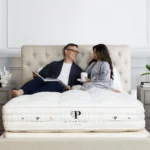 Enter To Win An Organic Luxury Mattress From PlushBeds!
Enter To Win An Organic Luxury Mattress From PlushBeds! 